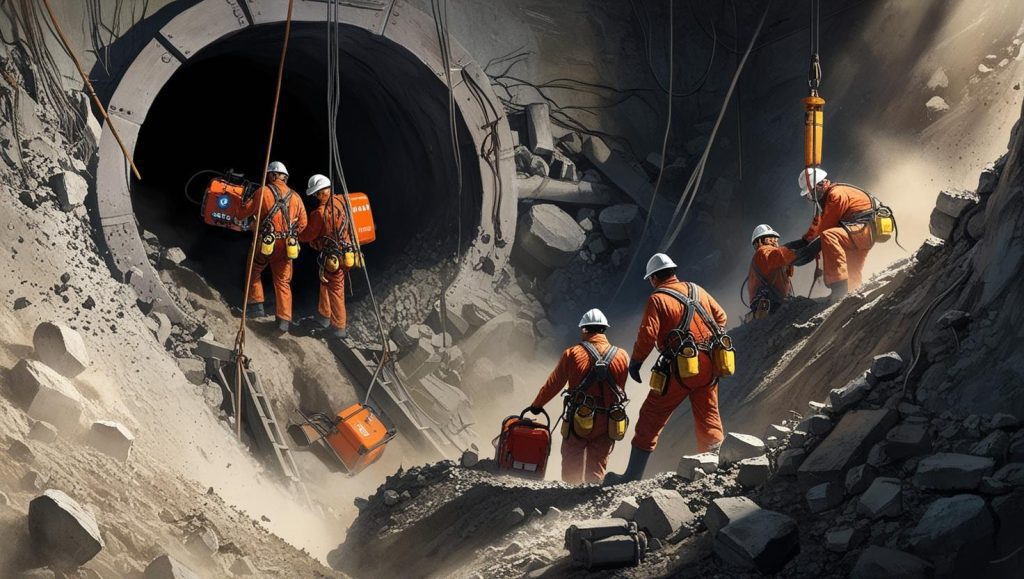Introduction
The Mine Hazards And Rescue Homework Help is an essential subject in mining engineering, safety management, and occupational health. Mining is one of the most hazardous industries, with workers facing risks such as cave-ins, gas explosions, and flooding. Understanding these hazards and the rescue strategies involved is crucial for ensuring the safety of miners and efficient emergency responses. This blog provides a comprehensive guide on mine hazards, risk mitigation, and rescue operations. Whether you are a student seeking homework help or a professional in the mining industry, this guide will be highly beneficial.
Understanding Mine Hazards
Mining operations involve various risks that can lead to serious accidents, injuries, and fatalities. Some of the most common mine hazards include:

Key Mine Hazards
- Cave-ins and Rock Falls: The sudden collapse of underground tunnels or rock layers due to structural weaknesses.
- Gas Explosions and Fires: The presence of flammable gases such as methane can lead to deadly explosions.
- Mine Flooding: Water accumulation in underground mines can cause catastrophic flooding.
- Toxic Gas Exposure: Dangerous gases like carbon monoxide, hydrogen sulfide, and radon can cause health issues or fatalities.
- Equipment-Related Accidents: Heavy machinery mishandling can lead to severe injuries and fatalities.
- Poor Ventilation: Lack of oxygen and high temperatures can make underground mining conditions life-threatening.
Risk Mitigation Strategies in Mining
To minimize mine hazards, mining companies and regulatory agencies implement various safety protocols and risk mitigation measures, including:
1. Structural Reinforcement and Monitoring
- Rock Bolting and Roof Support: Strengthening mine tunnels to prevent cave-ins.
- Seismic Monitoring Systems: Detecting ground movements that may indicate potential collapses.
2. Gas Detection and Fire Prevention
- Methane and Carbon Monoxide Detectors: Monitoring air quality to prevent explosions.
- Fire Suppression Systems: Using automatic sprinklers and fire-resistant materials.
3. Water Control and Drainage Systems
- Pumping Stations: Removing excess water to prevent mine flooding.
- Proper Drainage Design: Directing water away from mining areas.
4. Personal Protective Equipment (PPE)
- Respiratory Protection: Ensuring miners have gas masks and self-rescue breathing devices.
- Protective Clothing and Helmets: Reducing the risk of injuries from falling debris.
Mine Rescue Operations
Despite best efforts, accidents still occur, making mine rescue operations critical in saving lives. Rescue teams undergo specialized training to handle various mine emergencies.
1. Emergency Response Planning
- Mine Rescue Protocols: Establishing standard operating procedures for disaster response.
- Evacuation Drills: Conducting regular emergency evacuation simulations.
2. Mine Rescue Equipment
- Breathing Apparatus: Ensuring rescuers can navigate toxic environments.
- Thermal Imaging Cameras: Locating trapped miners in low-visibility conditions.
3. Search and Recovery Techniques
- Robot-Assisted Rescue Missions: Deploying automated systems to access hazardous areas.
- Communication Systems: Using underground wireless technology to maintain contact with trapped workers.
Mine Safety Regulations and Compliance
Governments and international organizations enforce strict regulations to ensure mining safety. Some key safety regulations include:
1. International Mine Safety Standards
- The International Labour Organization (ILO) Mining Convention: Promotes global mining safety practices.
- The Mine Safety and Health Administration (MSHA) Regulations: U.S. standards for ensuring miner safety.
2. Local and National Mining Safety Laws
- Occupational Health and Safety Act (OSHA): Establishes workplace safety requirements.
- The Coal Mine Health and Safety Act: Enforces safety rules specifically for coal mining operations.
The Future of Mine Safety and Rescue
Advancements in technology are improving mine safety and rescue operations. Some future trends include:
1. AI and Automation in Mining Safety
- Automated Monitoring Systems: Detecting hazards in real-time.
- Drones for Mine Inspection: Assessing conditions without human exposure to risk.
2. Improved Mine Rescue Technologies
- Advanced Self-Contained Breathing Apparatus (SCBA): Providing longer-lasting air supply for rescuers.
- Smart Helmets: Equipped with sensors to detect hazardous gases and structural weaknesses.
3. Sustainable and Safer Mining Practices
- Remote Mining Operations: Reducing human exposure to hazardous environments.
- Green Mining Initiatives: Using environmentally friendly mining techniques to reduce health risks.
Conclusion
Understanding the Mine Hazards And Rescue Homework Help is vital for students and professionals in the mining industry. Addressing mine hazards requires effective risk mitigation, advanced rescue operations, and strict regulatory compliance. With the integration of modern technologies, the future of mining safety is becoming more efficient and reliable.
For more insights into mine safety and rescue operations, visit Mine Safety and Health Administration (MSHA) or International Labour Organization (ILO) Mining.


